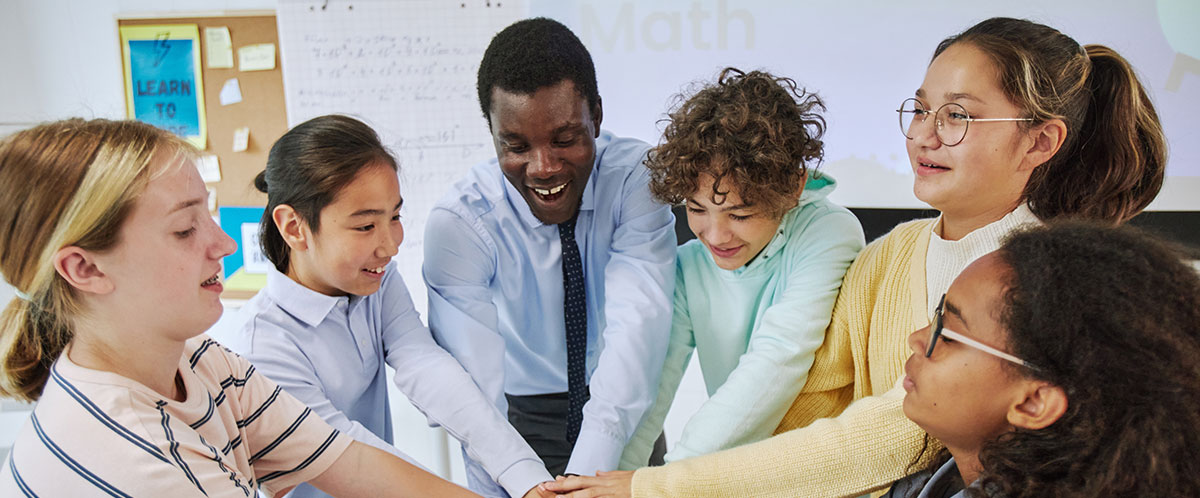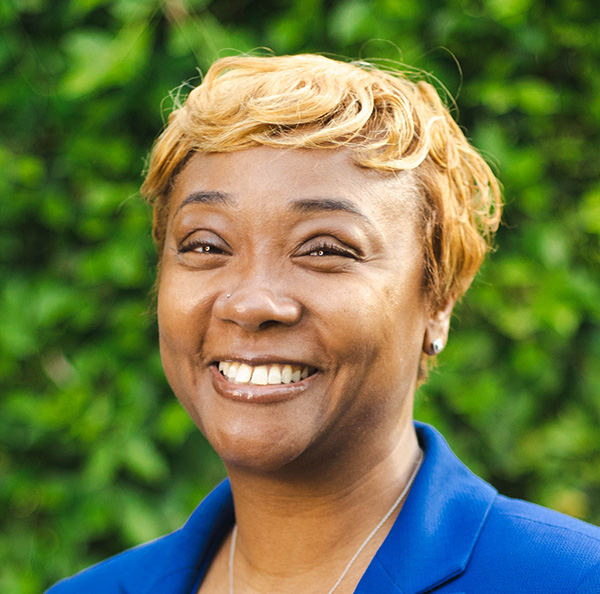We know school is much more than reading, writing, and arithmetic. For many of our student’s lives, students and teachers spend more time at school than at home with their families. It was very sobering to learn that when New York State grants licenses to teachers, they deem us “in loco parentis” instead of a parent. In order to uphold that charge and honor, teachers and school administrators must be aware of and meaningfully involved with not just our students but their families. This kind of family involvement calls for developing and fostering trusting relationships with them. After all, how can a teacher stand in place of any of their student’s parents if they have little knowledge of who their parents and families are?
It’s almost impossible to do so, and while the journey may not be easy, it doesn’t have to be hard. It just must come from the heart. This delicate, valuable, powerful relationship Is the foundation of the home-school connection, and it thrives best in the fertile soil of relational trust.

Building Relational Trust is Key for Parents and Families
Building relational trust with families and students is at the heart of community schools and is the impetus for their successful existence. How do I know this? I taught in community schools in Jamaica, Queens, and Gramercy Park, Manhattan, as a middle and high school English Language Arts teacher for the entirety of my tenure in the New York City Department of Education. For a large portion of that time, I was a single mother to my two then-school-aged children, who attended community schools. Before entering the teaching profession, I attended college and graduate school full-time to earn my teaching credentials. With so much going on in my life, I relied heavily on my children’s TRUSTED teachers to help me educate them and raise them. If I had a concern about my children, I asked their TRUSTED teachers for their insights; if something celebratory was going on in my children’s lives, I invited their TRUSTED teachers to be a part. If something was occurring in my life that was affecting my children, I shared it with their TRUSTED teachers to help them best attend to my children’s needs while in their care. “We were in this together.” That was my thought process, and my positive response from my kids’ TRUSTED teachers confirmed this for me. It is not shocking that these TRUSTED teachers are still in our lives until this day. They are the teachers who took the time and space to get to know me, my children, and our nuanced lived experiences that, as Black people in a predominantly white institution and community, did not always reflect those of the other students and families in the class or school.
Some facets of the dispositions of these TRUSTED teachers that made them different and approachable from other teachers were:
- They didn’t judge
- They took the time
- They went above and beyond
- They approached me from a space of partnership, not power
Cultural Identity: All Skinfolk ain’t Kinfolk
The collaboration between home and school was not new to me. My parents raised me to show my teachers respect and to represent myself and our home especially well in their presence. If my mother or father received any communication from my teachers or the school, whatever was shared was received with high regard. Like many of the parents of the students that I taught, my parents are immigrants who migrated to the United States from Jamaica, West Indies. In Jamaica, teachers are held in high esteem. They often live in the communities where they taught, so it was not odd as a student to see one’s teacher at the market, at a local sporting event, or church. This, too, was my experience as a teacher in community schools – especially in Jamaica, Queens, where the demographic of students I taught was mostly first-generation Americans from the Caribbean and Southeast Asian countries. Because of the value placed on me by my parents for education and educators, I took special care to include and listen to the parents and family members of the students entrusted in my care. They had a story to tell, and I wanted to hear it. The fact remains that the only way to build relationships is by getting to know people.
Sadly, as much as I wanted to and as much as I identified with my students and their families from my own perspective, I found building relationships with them harder than I thought it would be. What hindered the process was twofold. First, the reality is that because my students’ families and I shared some similarities in cultural backgrounds and/or race, our experiences were far from identical. That alone was not enough for them to connect with or like me. In short, all skinfolk ain’t kinfolk. If a trusting relationship were to be formed, it would take intentional time and effort – and I needed to be the one to initiate it. Second, and not as easy to identify or admit – my own implicit biases.
Implicit Bias and Awareness
I have to be honest with you, I didn’t always get the whole relational trust thing right. I am not exempt from having implicit biases. These biases of mine (and we all have them) hindered building trust with the students and families I served. Implicit bias is when a person is unaware of holding explicit stereotypes of social groups. Everyone has implicit biases. Jennifer L. Eberhardt, in Biased: Uncovering the Hidden Prejudice That Shapes What We See, Think, and Do (2019), explains implicit bias as ‘a distorting lens that’s a product of both the architecture of our brain and the disparities in our society.’ People develop ideas about many characteristics, including race, weight, ethnic origin, accent, religion, gender, and disability, based on past experiences, geographical location, popular culture, etc. Those ideas have the “power to bias our perception, attention, memory, and actions—all despite our conscious awareness or deliberate intentions.” One example specifically comes to mind where I assumed that the limited involvement of my student’s parents meant that they were not interested in their child. That assumption clouded how I viewed my students, and my disposition towards some of them became distant. I overheard one student tell another that I didn’t like them. At that moment, whatever implicit biases I had rose to the forefront of my consciousness. I didn’t like how it felt.
Parent Communication: Learn to Listen
I decided to do more than the perfunctory call home during the once-weekly time specifically designated for me to do so by the NYC DOE. I reached out to my student’s family when I got home that evening. When I took the time to ask questions instead of making assumptions, I learned that the reason my calls weren’t being returned was that the mom worked as a correctional officer, and she was not allowed to have her cell phone on her person while at work – where she was for 12-hour shifts, five to six days a week. None of my calls were getting through to her, and when she tried to return the outreach, the school was closed. There was so much about my students and their families that I didn’t know. A change, of course, was necessary, and from that day forward, we chartered a new course of communication and understanding that, over time, ultimately led to mutual trust and respect.
Ask More Questions. Listen. Relate. Repeat.
Because of our biases and because we are all so uniquely different, the only way to amplify learner voices is to remove the power struggle that fuels deficit-minded teaching and find other viable means of building meaningful relationships in our classrooms and schools that extend into the community and vice versa. This requires vulnerability. This requires trust.
In order to create an environment where trust can truly flourish, schools have to be willing to be transparent about what they are not doing well and why and invite students and their families to be a part of the solutions-oriented process on the front end, not after everything is seemingly in order. Developing relational trust requires the innate desire to keep up appearances out of fear of ridicule. I’ve found, sometimes the hard way, that the more I came clean with my students’ families about what was going on in the school, the more they were willing to come alongside as thought partners.
Relationship Between Home and School is Vital
My children’s teachers and I gave and received the reciprocal love and support that embodies what the relationship between home and the school looks like when done from a place of authenticity. I shared some of my experiences as a teacher striving to build relational trust with my students and their families. I witnessed other teachers do this with their students and their student’s families, too, and what I saw repeated was a genuine desire to get to know the families before them. Developing relational trust with families and students requires an ongoing acknowledgment of the inherent humanity in teachers, students, and their families. It’s reciprocal. In my experience and observation, this trust was most authentically achieved not by assuming but by asking questions.
Explore the questions below as you begin your beautiful journey of building relational trust. These questions have been created to cultivate a culture of trust. Consider using these questions to build quality relationships instead of in response to a negative situation with a student.
Questions for Families and Caregivers:
- What was your educational experience like?
- What are ______ strengths?
- What strategies work best for__________?
- What are some different ways that I could support _______?
- How do you think ______ learns best?
- What advice would you give me to create a more trusting relationship with ______?
Questions for Students:
- What are your strengths in school? Home? Hobbies?
- When was a time that you were super successful in school?
- How did you know you were successful?
- How did you feel?
- What led to your success?
- What do you do when you get stuck?
- How do you like to learn best?
- How do you ask for help if you are stuck?
- What stops you from learning?
- Whom do you admire in math class? Why?
- What does good learning in math look like and sound like?
- Is there anything else you would like to tell me?
Read more about culturally responsive and sustaining assessment in, ‘Amplify Learner Voice through Culturally Responsive and Sustaining Assessment’ published by Mimi & Todd Press. Follow and connect with me, Vivett Dukes, on LinkedIn and Twitter.
Learn More!

